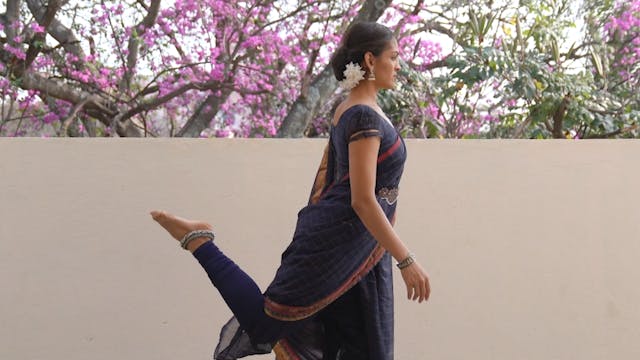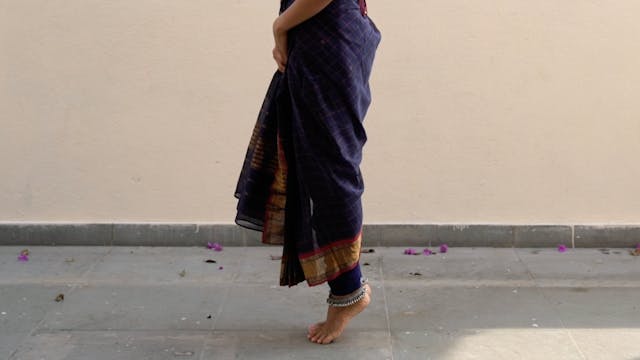Jānu bheda Shloka
Playlist 34
•
34s
Jānu bheda according to the Sangīta Ratnākara, is an Upānga. The knees are considered one of the minor limbs.
The movements of the knees are used not only for the precise control in the execution of Nritta but also to communicate meaning in the context of gesture. Some of the positions elucidated in the Jānu bheda are subsequently elucidated as one of the main positions of movement origin in the Abhinaya Darpana.
Please refer to the Shloka below for pronunciation. Please note that the separate movements of the head when put together in a Shloka form 'Sandhis', or compound words in the Sanskrit language. Words like 'ca', 'thatha', mean "and", "also". The separate words for each movement are also given below the shloka
Samhatam kuñcitam cārdhakuñcitam natamunnatam
Vivrttam samamityukte jānu saptavidham budhaih
Samhata
Kuñcita
Ardha Kuñcita
Nata
Unnata
Vivrtta
Sama
Up Next in Playlist 34
-
Janghā bheda Shloka
The shins/ shanks are considered one of the Upāngas, or minor limbs according to the Nātyaśāstra
The movements are used not only for the precise control in the execution of Nritta but also to communicate meaning in the context of gesture.
Please refer to the Shloka below for pronunciation. Plea...
-
Pārśni bheda Shloka
The heels are considered one of the Upāngas, or minor limbs
The movements are used not only for the precise control in the execution of Nritta but also to communicate meaning in the context of gesture.
Please refer to the Shloka below for pronunciation. Please note that the separate movements ...
-
Gulphā bheda Shloka
The Ankle is considered one of the Upāngas, or minor limbs according to the Sangīta Ratnākara.
The movements of the ankle are important in pure dance and in emotive contexts.
Please refer to the Shloka below for pronunciation. Please note that the separate movements of the head when put togethe...


